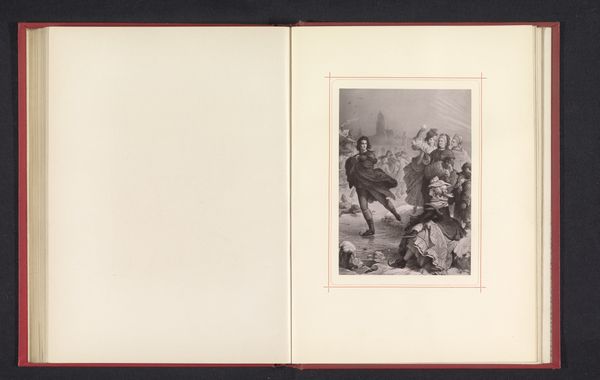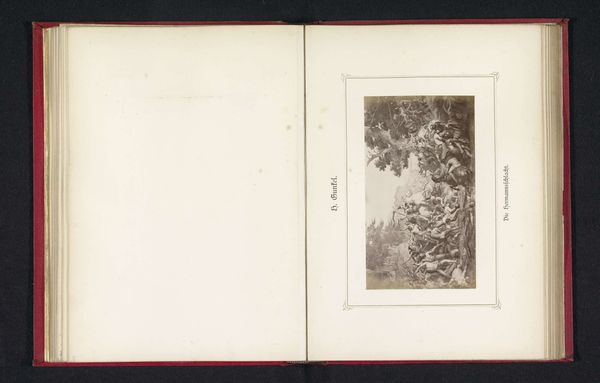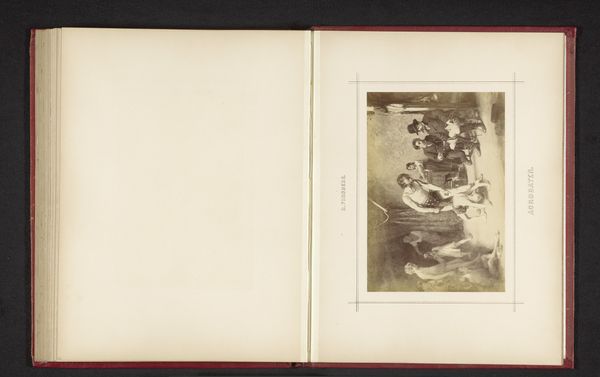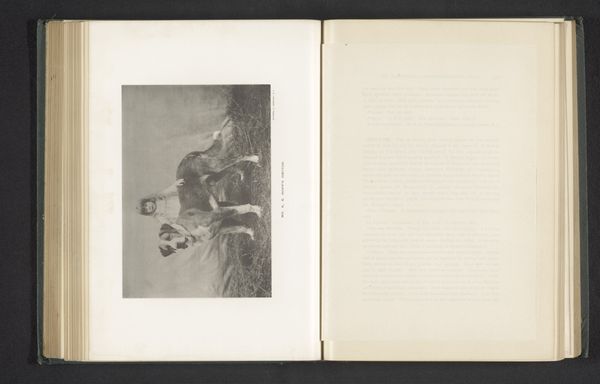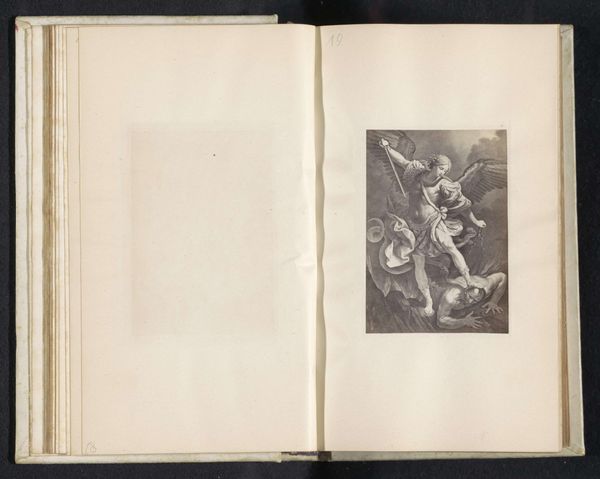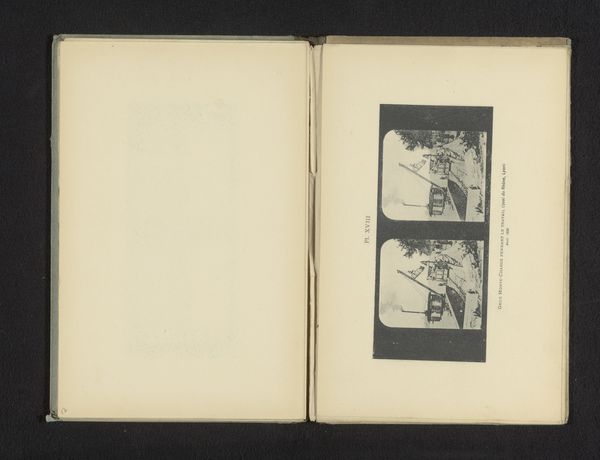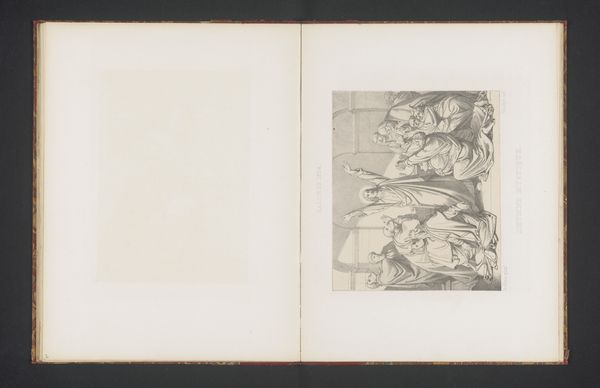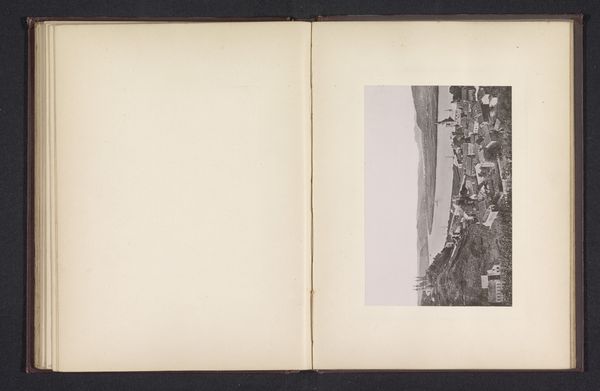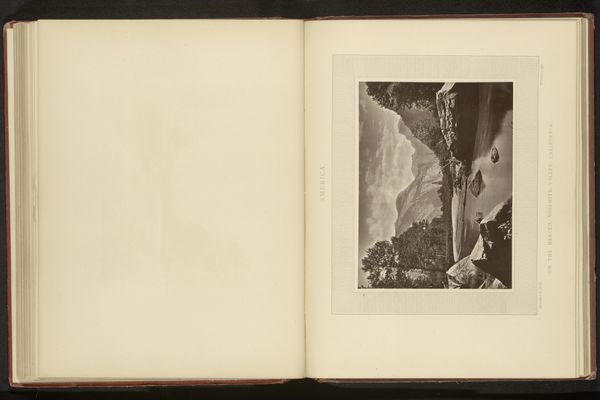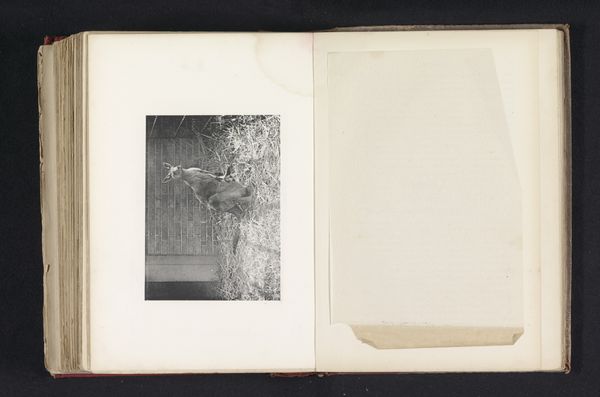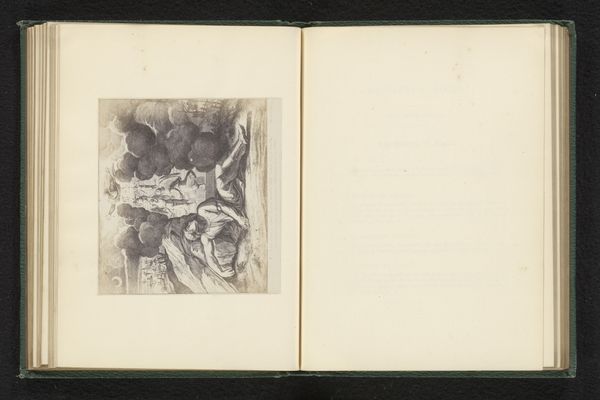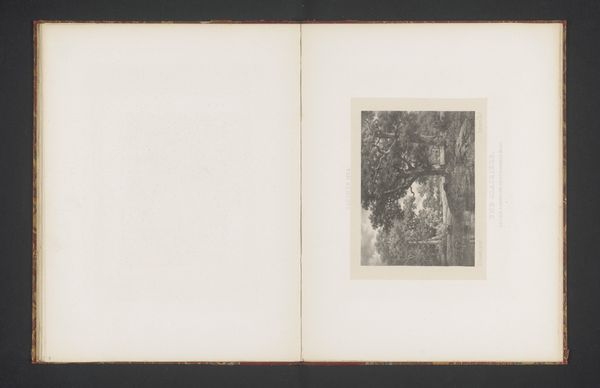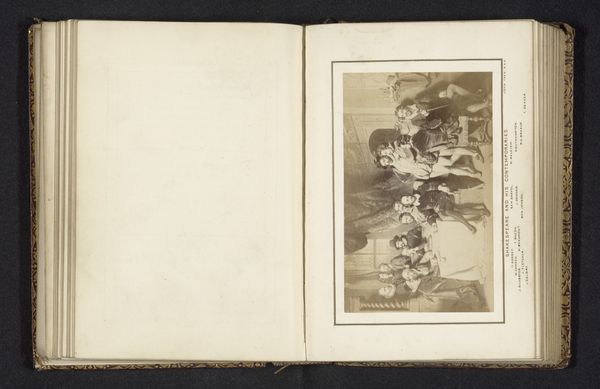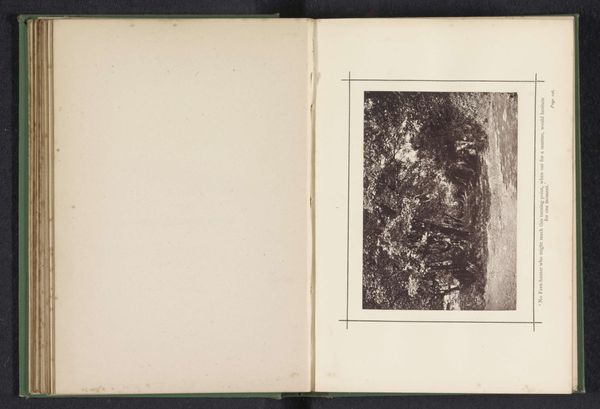
photography, gelatin-silver-print
#
portrait
#
ink paper printed
#
photography
#
gelatin-silver-print
Dimensions: height 97 mm, width 143 mm
Copyright: Rijks Museum: Open Domain
Curator: Here we have a fascinating photograph by Henry W. Taunt, taken before 1884 at Hughenden Manor. The piece is titled, "Group taken at Hughenden Manor" and appears to be a gelatin silver print. Editor: My first impression is the stark contrast between the rigid formality of the portrait and the assumed naturalness of the outdoor setting. There's an almost comical stiffness to their poses. Curator: That stiffness speaks volumes, doesn't it? Hughenden Manor was the country home of Benjamin Disraeli, Queen Victoria's favourite Prime Minister. Photography at this time was meticulously composed for posterity and symbolic weight. Editor: Exactly! The production of this image—the cost of photography, the materials needed, like that gelatin silver—was prohibitive. It’s meant to convey wealth, power and lasting legacy of a certain political echelon. Curator: And look at how Disraeli, the man of the house, is centered but positioned back, the estate quite literally looms behind him, emphasizing his stature and role in British society. Editor: The framing is clever; a simple ornate line, drawing attention to their attire – bespoke tailoring and impeccable presentation, a display of capital at its finest. Even the very materiality of the print signals luxury. Curator: Considering this was likely commissioned, the staged setting also reflects the institutional power of Disraeli's Conservative party, subtly reinforcing social hierarchies. This image wouldn't have circulated widely. Editor: True, this portrait would primarily serve within a specific circuit of upper-class society and potentially within archives. Looking at the albumen print, I think of the labourers producing it, who certainly didn't feature in it. Curator: Ultimately, this photograph acts as a fascinating lens through which we can examine the social and political constructs of late 19th century Britain. Editor: It's remarkable how this single image, through its very materials and composition, exposes so much about the era’s power dynamics and material culture.
Comments
No comments
Be the first to comment and join the conversation on the ultimate creative platform.
